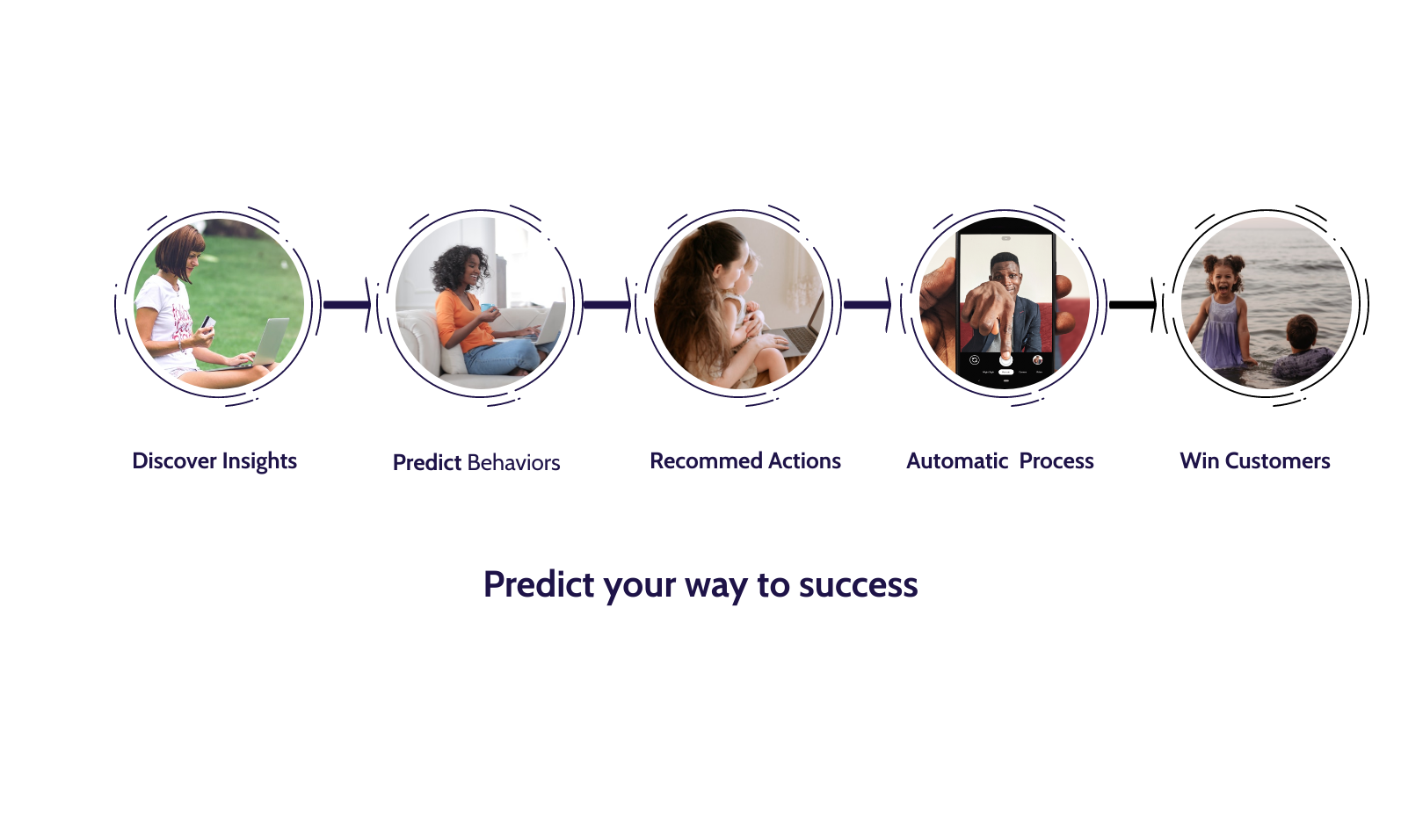How to use data analytics to unlock insights on online buyer’s behaviour
The world is changing at a rapid pace, technology is evolving, and brands are super competitive. Staying in business takes strong efforts. The Retails sector is no different. With mobile and internet access, web and mobile commerce were accessible to almost everyone. As a result, the e-commerce industry, taking a fair share from the physical retail sector. The worldwide retail industry expected to hit USD 29 Trillion in 2023. According to a report by e-marketer, this was a projection made for 2017-2023. The physical retail industry did USD 25 Trillion for the year 2019, and the E-commerce industry did USD 3.5 Trillion in worldwide sales for the year 2019.
The E-commerce industry expected to grow 2% every year till 2023 to hit USD 6.5 Trillion Worldwide, it might sound a small share of the whole retail sector but still a relevant one. Amazon being the Flagbearer of this e-commerce industry flight, among other brands staying afloat. With platforms like Shopify and Bigcommerce, the e-commerce market is available to everyone with its low entry barrier.

The competition between brands is at an all-time high, to stay relevant, brands need to focus more on factual information—this is information related to its consumers, products, placements, advertising, or contents. All information and data collected are to be interpreted and converted into actionable insight. The E-commerce platforms may be advantageous over the physical retail business as far as information is concerned. Digital platforms allow us to track, monitor, and report every activity of the consumer. Consumer interactions not only help the brands but also improve the purchasing experience for consumers. The more you know about your consumers, the better rewarding it gets for brands.
The current ecosystem has transformed into a customer-centric network of applications that primarily use the internet for reaching out to the customers and tracking every event and action linked with the customer concerning the offering. An offering can be any product or service. It is not surprising that companies spend millions of dollars on executing market research before making up a brand-new service or merchandise. Moreover, it’s essential to realize that the last product does not market itself and needs the ideal promotion tools to make it visible to the possible customers.
Doing, so the traditional manner is equal to taking the perfect amount of danger, but sadly, companies can’t manage to conduct on a trial and error strategy approach. The challenge for a customer to completely exiting the purchase funnel journey increases, and attributed mainly to new technologies, goods and trendy modern essentials with millions of purchasing choices at users disposal, buying a product or service is not just straight forward. The customer has a great deal to contemplate before he or she eventually makes the purchase.

Companies and brands require to make data-driven decisions to understand their consumer behaviour. Based on data interpretation, companies can improve their brand loyalty and customer engagement, improve customer experience, and increase revenue.
What are Consumer Data insights?
When data is collected and segmented into meaningful patterns or trends, it is called consumer insights. These consumer data insights help brands to allocate resources on quantified and observed attention areas. There are many data points available to provide a deep understanding of consumer behaviour, which in turn provide accurate projections for any brand to improve or optimize various business aspects, eg.
1. To increase customer loyalty.
2. To optimize multiple marketing channels.
3. To support goals related to sales and marketing.
4. Improve the product or service
5. Improve customer experience, customer satisfaction, and engagement
6. Providing relevant information – context over content
Consumer insights are not just observations, no matter how interchangeably the terms. Consumer insights are highly actionable advice that suits most of the individuals and can impact customer experiences as individualized shopping practices and their improvement plans. As per McKinsey Global Institute, “Data-driven organizations are 23 times more likely to acquire customers, 6 times as likely to retain customers, and 19 times as likely to be profitable as a result.”
With current web and app platforms, there are specific insights which are readily available and helpful for the store/brand/product optimization, e.g.-
1. Buying History – what all product a customer has brought or how many products are sold based on categories, price ranges, or order intervals
2. Products in cart – what all products a customer wanted to buy or interested in, but still not finalized to complete the purchase. Reasons could be many, e.g., the customer wants to check for more options, look for better prices, want prices to fall, or sometimes it’s not that urgent or essential product.
3. Wishlist – Unlike the cart, this section carries the aspirational purchase but provides excellent insight into customer’s interests. Consumers can be alerted whenever there is a decline in prices, or special offers are in place.
4. User Registration – Knowing your consumer is essential; the user registration page usually collected name, address, phone, email, and sometimes age, gender, marital status. When this data is analyzed with the correlation with Buying History, product sales, and wishlist, provide super helpful insights. The email and phone data that you are collecting is priceless for retargeting.
5. Site Search – Search is super helpful for product discovery. Search queries provide you with great insights on what people are looking for, what all searches result in a purchase, what all keywords consumers use to reach desired products.
6. Personalization – The information, data, content, or products tailored to users based on personas, groups or demographic segments instead of providing one data type for all online users. Sitecore real-time commerce personalization is a technology, which can help deliver an individualized experience using a holistic customer profile to driver personalization.
The most important aspect of this buyer-seller transaction is the customer journey or customer life cycle. The second most important aspect is where precisely a user exits the platform. Usually, this customer journey categorized into segment, events or milestones, and these events are as follows;
- The customer visits the website or app.
- Customers check out a specific series of products.
- The customer either exits the website and hops onto some other site.
- Or. Performs Add To cart (ATC) for any product
- After ATC customer either Checkout or leave the cart bag as is without checkout
- Post Checkout, either customer gets a thank you page or some more recommended products or never returns.
These events are mostly applicable for 90% of scenarios for any other cases we can always create custom events. We need to track and record the user activity for all these events, and no matter how complex it might sound, it is relatively easy to implement even for small businesses through common platforms like google analytics and Facebook analytics. And for enterprise, tools such a Sitecore Path Analyzer, Microsoft PowerBI, IBM Cognos Analytics, or a custom build performed by companies to meet a requirement.
Facebook Advertising is based on analytics only; they track user behaviour and contain them in different segments. That’s not all Facebook might have more than 500 data points for every user. Many platforms provide deep insights on buying patterns of the consumer, e.g. Shopify, an eCommerce done for your platform is competing with amazon when used with conjunction with Facebook Pixels code. Shopify with Facebook advertising has established a dropshipping industry solely by making use of cases of data analytics. One can easily track and record above mentioned six (6) events and show the ads based on the exit stage of the user.
According to data, one may say a “consumer sees an ad on an avg. Seven (7) times to complete the purchase“.
E.g., if a user has any product added to cart and exited before the checkout, brands can serve an ad for a reminder or maybe go one step further provide a custom discount code to that buyer to complete the purchase by sweetening the offer value.
For Data Analytics, there are three levels in which brands can engage.
- Descriptive Analytics
- Predictive Analytics
- Regression Analytics
- Prescriptive Analytics
Descriptive Analytics is the examination of data or content usually manually performed to answer the question, “what happened?” Business Intelligence and visualizations techniques bring context to descriptive analytics.
Predictive Analytics is a form of advanced analytics that examine data to answer the question “what is going to happen? or what is likely to happen?”
Regression analysis, Forecasting, predictive modelling techniques are technics for Predictive analytics
Prescriptive Analytics is the analysis of data the answers the question, “what should be done?”
Complex Event Processing (CEP), Simulation, Recommendation Engines techniques to which one can implement for prescriptive analytics. The focus here will be solely on predictive analytics because the goal of customer data analytics is to make predictive decisions on how to acquire and retain customers. Better we get the understanding of customer data, the more accurate predictive decisions come, and thus it helps in making a smooth customer journey.
A survey conducted by Forbes claims-
“A vast majority of executives who have been overseeing predictive marketing efforts for at least two years (86%) report increased return on investment (ROI) as a result of their predictive marketing.”
Reasons to analyze customer behaviour: –
Let’s say someone lands on your store, and the moment that person sets foot in your store, you know precisely the intention of that person. You know what all things the person would probably buy, and you even know whether the person will buy from you or not. Wouldn’t it become more convenient for you to manage your store? And increase your purchase? And for that, analyzing customer behaviour is necessary to: –
Gain Insight: You can segment the customer database according to their purchasing behaviour so that it will become easier to manage.
Attract and Engage Potential Customers: Targeting the customer with personalized new offers and discounts based on their past purchasing history.
Improve Customer Retention: With these businesses get to know the actual lifetime value of a customer, and based on that, it becomes easier to retain customers.

How to use data analytics to unlock the buyer’s behaviour: –
1 – Analyze the Pattern:
Information like what customers purchase, how much time they stay on the website, and how many times they contacted customer service can give insightful data about customer’s preferences and purchasing behaviour. For instance, a bank can minimize fraud and default risk by pooling data and applying analytics to understand possible predictive actions. With this pattern, banks will get the idea of who will be at high risk of defaulting in the mortgage. So the model can be used to watch things more precisely, and eventually, it will help businesses to run smoothly.
By analyzing the customer’s data, marketing gets the idea of which type of marketing could be better for which segment of the customers. Analyzing the pattern can help marketers to present personalized marketing experiences to their customers. They can even name their segmented data profile, i.e., Rich profile, or Loyal profile. They even think which type of content will work on which channel and which kind of format will have the most significant impact on their key segments.
All of this can help them reach a new level of marketing, which can only be achieved by analyzing the data and getting extraction from it. A decade ago, these tools weren’t available, but now these are available, and almost every industry is taking benefits from it. For instance, an automobile insurance company learned that the customer journey to buying any automobile insurance policies typically starts 60 days before a customer receives their first quotation. They can now use this information to plan their outreach accordingly to give a personalized experience to their customer, which would be loved by the customers.
2 – On-Demand Pricing –
It is the process of pricing products and services based on real-time demand reflected by data elasticity among customer segments. Let us take an example of one of the renowned companies, UBER. Uber doesn’t cost everyone the same, and they have different prices according to different situations and customer segments. If you are booking a ride during the rush hours, then the price would likely be high. Likewise, people going or coming back from office require a comfortable ride, so they are willing to pay more for that if your phone’s battery is running low and you’re booking a trip, then UBER is likely to charge you more because they know the urgency. Using predictive analysis, companies can design their demand pricing structure, which can help them achieve maximum ROI while providing excellent customer service.
3 – Improve Customer Satisfaction –
If you are directly selling your product or services to your customers, you are doing it all wrong. We are in 2020, and at this point, we should focus more on serving rather than selling. Customer satisfaction has a significant impact on retention and loyalty, so if you’re serving your customers rightly, then you don’t need to worry about getting sales from them, it will eventually happen.
“Losing a customer can be five (5) times more expensive than retaining one.”
Predictive analysis can help in improving customer satisfaction in a significant way. Tools such as conjoint analysis, which is a survey-based statistical technique that helps determine how customers value different attributes in an organization like feature, functions & benefits. It can help achieve more customer satisfaction by pinpointing the product/service whose enhancement can improve customer satisfaction.
4 – It’s all about Reviews and Recommendations: –
At this point, our customers can easily differentiate sponsored content with user-generated reviews and recommendations—no doubt, online reputation management, and sentiment analysis are high in demand. Take a look at the picture below, and it will make it clear how reviews and recommendations beat most typical media today.

With predictive analysis, companies can vary their sense of customer service to attain that level of reviews and recommendations from their customers. So analyzing reviews and recommendations, observing their pattern, their channel is essential.
5 – Forecasting
It is a technique used to take data and predict future possibilities or future value by looking at its unique trends. It uses data mining and probability to forecast more specific outcomes. The primary use of predictive analysis is to create models that predict sales and revenue, which is crucial in making a future budget. For example, an eCommerce company can easily find out their next year’s budget and revenue by analyzing their past data.
Models of Consumer Buying Behaviour: –
1 – Economic Model – According to the economic model, consumers try to maximize the utility of the product they purchase. It is based on the law of diminishing marginal utility. The core derivation of this model involves the desire of the customer to gain the maximum by spending minimum cost. This model assumes the close similarity between the behaviour of the buyer and their buying pattern. This model is primarily based on Income Effect, Substitution Effect & Price Effect.
2 – Learning model – According to the learning model, the buyer’s behaviour is based on some of the core concepts, i.e., Drive, Stimuli, Cues & Response. For example, if the response to stimuli is “rewarding,” then it encourages a similar response. The same happens in marketing and the buyer’s journey.
3 – Psychoanalytical model – This model tells us that human needs operate at various levels of consciousness. But these levels cannot be visible by the casual observer, and they can only be analyzed by specialized research.
4 – Sociological Model – This model is related to the society where buyers live. This model states that the buyer’s purchasing behaviour will be influenced by the community where they live. Primary groups of family, relatives & friends have a significant influence when it comes to purchasing behaviour.
How COVID-19 will impact online purchase behaviour
The economics of online purchase continually changes; however, the current pandemic, help speed up the transformation. For instance, consumers are more focused on safety, health, and hygiene, and the same reflected in the kind of purchases made lately. Items with better sanitation, more shelf life are preferred, for food non-perishable items are on the rise.
Similarly, for Brands, brands that promote hygiene, associate or endorse earth-saving agendas, and provide value to the individual part of the consumer will be gaining the upper hand at the end.
Final Thoughts
The transformation fueled by the current pandemic accelerated consumer behaviour offline and online. Covid-19, as a catalyst, transformed the willingness to purchase in-store versus online. Mostly due to the reluctant to go for the physical store, or as consumers comply with government social distancing protocols globally. Consumers are looking for online alternatives; promoting a rapid adaptation of e-commerce by companies to meet demand or simply to survive.
Understanding the consumer’s behaviour, it’s even more crucial, allowing companies to adapt its technology, to fit the current changes in society. The consumers generally want to feel in control, regardless of the touchpoint and wish to have a frictionless experience as they continue to opt for e-commerce platforms.

